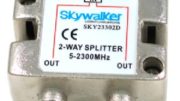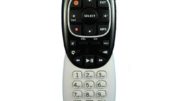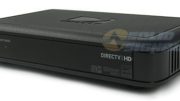You don’t need me to tell you that being on the water means being self-sufficient. That’s sort of the point of setting out on your own. You’re carrying everything you need with you. After all, no one delivers to a ship at sea the same way they do at home.
Marine satellite television… a special thing
It’s estimated that marine satellite customers make up less than 2% of the total satellite customer base. And yet, because of the marine lifestyle, that 2% contains some of the wealthiest individuals and businesses. People who want everything perfect. People who are willing to pay to make sure nothing goes wrong. These are the folks who invest seriously in their ability to watch TV on the water, and deserve the best. You should know, you’re one of them.
When you’ve paid top dollar for a satellite system…
it may worry you if the receiver you get from Solid Signal is marked as refurbished, or that it may have a manufacture date as early as 2010. I hear you, my friend, and I’m here to soothe your concerns.
Yes it’s true that the receiver you get will almost certainly be refurbished. The most popular receiver for marine use is the H24, a receiver that was first made in 2010 and ceased production around 2013. Another one, the H25, is only slightly newer. Most modern systems will work with marine systems, but customers seem to flock to the old H24 because it really meets their needs. Here’s why:
-
The H24 is the only receiver that will work without a SWM. This means that it will work with international systems that use traditional multiswitches.
-
The H24-700 variant will work with 220-240 volt power without a voltage converter. This is important if the boat is configured for European power.
-
The H24 isn’t the smallest receiver but it is quite small.
-
The H24 is the only receiver that will work without a power brick, meaning installation is more straightforward.
Some of that can also be said about the H25, but it is designed solely for SWM systems so it will not work well if you are taking the boat outside US waters and using a different receiver for another country’s service.
Don’t worry, be happy
There’s no reason to worry that you’ve gotten a refurbished receiver. Those H24s are incredibly overbuilt. It’s amazing how overbuilt they are. After dealing with years of heat-related issues from older receivers, the H24 was designed so that the entire inside is essentially one big thermal conduit. Heat is passively routed out vents on the side. There’s also a fan for the internal power supply as well. The electronics inside stay nice and cool and that’s one reason they last so long.
The other reason is that they are very well engineered. In general, all DIRECTV receivers are. They were designed for this sort of service life, to save the company money on new receivers. Refurbishing is a common practice in the pay-TV industry, but AT&T takes it further with several levels of refurbishing and testing.
Just test before you leave port
The biggest stress that a receiver’s going to have in its life comes while it’s traveling to its new home. That’s when it’s going to be shaken, potentially dropped, go through differences in temperature and humidity. That’s the hardest work that the receiver will go through. So, make sure when you install that new receiver, you test it thoroughly before you leave port. If it’s going to fail, chances are it will fail within the first 24 hours.
It’s also important to call Solid Signal at 888-233-7563 for activation. The regular overseas call center won’t be able to help you with the special circumstances of marine activations, and our techs do it all day. It really makes a difference.





